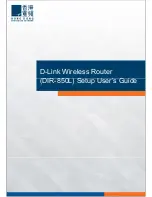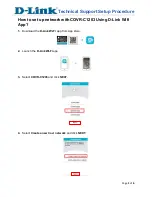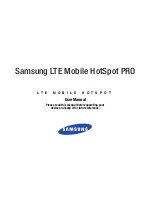
62
Wireless configuration
The 802.11n standard specifies two guard intervals: 400ns (short) and 800ns (long). Support
of the 400ns interval is optional for transmit and receive. The guard interval is the dead time, in
nanoseconds, between symbols (or characters) transmitted by the AP. The guard interval helps
distinguish where one symbol transmission stops and another starts, thereby reducing inter-
symbol interference. Enabling the Short Guard Interval improves throughput and is
recommended.
802.11g Protection Mode
Enables a backward compatible protection mechanism for 802.11g and 802.11b clients. The
802.11 standard provides a way to protect transmission against other device transmission by
using the RTS/CTS protocol. There are two types of protection:
•
CTS to Self
: The AP that wants to send a frame sends a CTS frame “to itself.”
•
RTS/CTS
: The AP that wants to send frame first sends a Request-To-Send frame and waits
for a Clear-To-Send frame from the intended destination. By “seeing” the RTS or CTS
frames, 802.11-compliant devices know that somebody is about to transmit and therefore do
not initiate transmission themselves.
Extension Channel Protection Mode
With 802.11n, there is the option to use a 40 (2x20) MHz bandwidth to double the data rate.
One is the primary channel, and the other is the extension channel. The primary channel is
used for communications with clients incapable of the 40 MHz mode. If the extension channel
is used, the 802.11 standard provides a way to protect transmission against other device
transmission by using the RTS/CTS protocol. There are two types of protection:
•
CTS to Self
: The AP that wants to send a frame sends a CTS frame “to itself.”
•
RTS/CTS
: The AP that wants to send frame first sends a Request-To-Send frame and waits
for a Clear-To-Send frame from the intended destination. By “seeing” the RTS or CTS
frames, 802.11-compliant devices know that somebody is about to transmit and therefore do
not initiate transmission themselves.
Preamble Mode
Sets the length of the signal preamble that is used at the start of a data transmission. Using a
short preamble increases data throughput when it is supported by all connected clients. Using
a long preamble ensures that 802.11b clients can connect to the network. (Default: Auto)
Max TX Power
Adjusts the power of the radio signals transmitted from the router. The higher the transmission
power, the farther the transmission range. Power selection is not just a tradeoff between
coverage area and maximum supported clients. You also have to ensure that high-power
signals do not interfere with the operation of other radio devices in the area. (Range -
Percentage mode: min, 12.5%, 25%, 50%, 100%; Default: 100%)
Содержание PS110
Страница 6: ...6 ...
Страница 10: ...10 Deploying the HP PS110 ...
Страница 32: ...32 Managing the HP PS110 system ...
Страница 48: ...48 LAN configuration ...
Страница 76: ...76 VPN configuration ...
Страница 84: ...84 Routing configuration ...
Страница 94: ...94 Firewall configuration ...
Страница 126: ...126 Tools ...
Страница 130: ...130 ...
















































